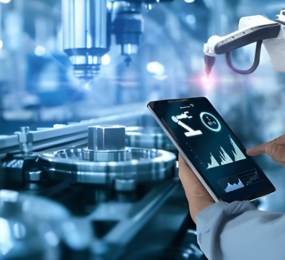Driving Toward Safety: The Critical Role of Functional Safety in Modern Vehicles
In today’s rapidly evolving automotive industry, safety is no longer limited to seatbelts and airbags. With the rise of electric vehicles (EVs), advanced driver-assistance systems (ADAS), and fully autonomous technologies, the very definition of vehicle safety has transformed. At the heart of this transformation is a concept known as functional safety.
Automotive functional safety ensures that critical electronic systems behave as expected—even when things go wrong. From steering and braking to lane-keeping and collision avoidance, modern cars are increasingly dependent on software-driven components. A single malfunction in these systems could pose serious risks, not only to passengers but also to others on the road.
Understanding the Fundamentals
Functional safety, as outlined in the ISO 26262 standard, refers to the ability of a system to detect and safely respond to faults. It’s about building fail-safes into every process, ensuring that if something fails, it does so in a controlled, predictable way.
For example, if a sensor responsible for adaptive cruise control starts malfunctioning, the system should be able to identify the error, alert the driver, and disengage safely—without causing abrupt stops or erratic driving. This preventive logic is crucial, especially in autonomous or semi-autonomous environments where machines are expected to make split-second decisions.
Why Functional Safety Matters More Than Ever
As vehicles evolve into high-tech machines on wheels, the number of embedded control units and software lines has surged dramatically. A modern car can contain more than 100 million lines of code—each line representing a potential point of failure.
This complexity demands a robust framework to manage risk. Functional safety doesn’t just protect drivers; it protects the reputation of manufacturers, the confidence of consumers, and the regulatory standing of new technologies.
Furthermore, the electrification of powertrains introduces new challenges, including thermal management, voltage control, and battery safety. All of these require specialized functional safety strategies to ensure reliability in every condition.
A Shared Responsibility
Achieving functional safety is not the job of a single team or department. It involves engineers, designers, quality managers, suppliers, and regulatory bodies working together from the earliest design stages to post-production.
It also requires continuous validation, testing, and traceability—ensuring that each component, whether mechanical or digital, meets the highest standards of performance under both normal and fault conditions.
Takeaway Point
In the pursuit of innovation, safety must never take a back seat. Automotive functional safety is the invisible shield that supports every breakthrough in mobility. As vehicles become smarter and more autonomous, our commitment to building systems that not only work—but fail safely—will define the future of transport. It's not just about the technology in the car; it’s about the peace of mind behind the wheel.
Learn more on our website: https://www.leadventgrp.com/event/3rd-annual-automotive-functional-safety-forum/register
For more information and group participation, contact us: [email protected] .
Leadvent Group - Industry Leading Events for Business Leaders!
www.leadventgrp.com | [email protected]












